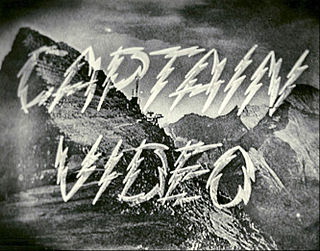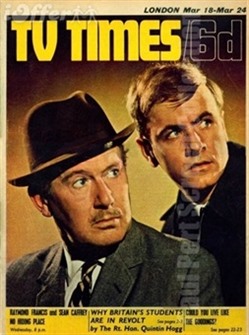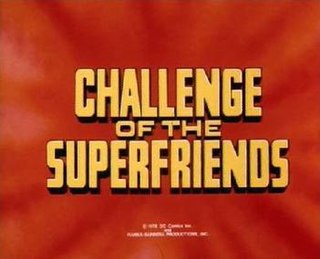Related Research Articles

The Avengers is a British espionage television series, created in 1961, that ran for 161 episodes until 1969. It initially focused on David Keel, aided by John Steed. Hendry left after the first series; Steed then became the main character, partnered with a succession of assistants. His most famous assistants were intelligent, stylish, and assertive women: Cathy Gale, Emma Peel, and Tara King. Dresses and suits for the series were made by Pierre Cardin.

Hawaii Five-O is an American police procedural drama series produced by CBS Productions and created by Leonard Freeman. Set in Hawaii, the show originally aired for 12 seasons on CBS from September 20, 1968, to April 8, 1980, and continues in reruns. At the airing of its last episode, it was the longest-running police drama in American television history, and the last scripted primetime show that debuted in the 1960s to leave the air.

In the Heat of the Night is an American police procedural crime drama television series loosely based on the 1967 film and 1965 novel of the same title that starred Carroll O'Connor as police chief Bill Gillespie and Howard Rollins as police detective Virgil Tibbs and was broadcast on NBC from March 6, 1988-May 19, 1992 before moving to CBS, where it aired from October 28, 1992-May 16, 1995. Its executive producers were O'Connor, Fred Silverman and Juanita Bartlett. This series marked O'Connor's return to a series for the first time since the All in the Family spinoff Archie Bunker's Place ended in 1983.

Home and Away is an Australian television soap opera. It was created by Alan Bateman and commenced broadcast on the Seven Network on 17 January 1988. Bateman came up with the concept of the show during a trip to Kangaroo Point, New South Wales, where he noticed locals were complaining about the construction of a foster home and against the idea of foster children from the city living in the area. The soap opera was initially going to be called Refuge, but the name was changed to the "friendlier" title of Home and Away once production began.

American Bandstand (AB) is an American music-performance and dance television program that aired regularly in various versions from 1952 to 1989, and was hosted from 1956 until its final season by Dick Clark, who also served as the program's producer. It featured teenagers dancing to Top 40 music introduced by Clark. The program was televised from Philadelphia from its 1952 debut until its move to Los Angeles in 1963.

Ironside is an American television crime drama that aired on NBC over eight seasons from 1967 to 1975. The show starred Raymond Burr as Robert T. Ironside, a consultant for the San Francisco police department, who was paralyzed from the waist down after being shot while on vacation. The character debuted on March 28, 1967, in a TV movie entitled Ironside. When the series was broadcast in the United Kingdom, from late 1967 onward, it was broadcast as A Man Called Ironside. The show earned Burr six Emmy and two Golden Globe nominations.

The Sweeney is a 1970s British television police drama focusing on two members of the Flying Squad, a branch of the Metropolitan Police specialising in tackling armed robbery and violent crime in London. It stars John Thaw as Detective Inspector Jack Regan and Dennis Waterman as his partner, Detective Sergeant George Carter. It was produced by the Thames Television subsidiary Euston Films for broadcast on the ITV network in the UK between 2 January 1975 and 28 December 1978.

UFO is a 1970 British science fiction television series about the covert efforts of an international defence organisation to prevent an alien invasion of Earth. It was created by Gerry Anderson and Sylvia Anderson with Reg Hill, and produced by the Andersons and Lew Grade's Century 21 for Grade's ITC Entertainment company.

Adventures of Superman is an American television series based on comic book characters and concepts that Jerry Siegel and Joe Shuster created in 1938. The show was the first television series to feature Superman and began filming in 1951 in California on RKO-Pathé stages and the RKO Forty Acres back lot. Cereal manufacturer Kellogg's sponsored the show. The first and last airdates of the show, which was produced for first-run syndication rather than for a network, are disputed, but they are generally accepted as September 19, 1952, and April 28, 1958. The show's first two seasons were filmed in black-and-white; seasons three through six were filmed in color.

Cold Case is an American police procedural crime drama television series. It ran on CBS from September 28, 2003, to May 2, 2010. The series revolved around a fictionalized Philadelphia Police Department division that specializes in investigating cold cases, usually homicides.

Hollyoaks is a British soap opera which originally began airing on Channel 4 on 23 October 1995. It was created by Phil Redmond, who had previously conceived the soap opera Brookside. From 2005 to 2023, episodes have aired on sister channel E4 a day prior to their broadcast on Channel 4. In 2023, Hollyoaks was removed from Channel 4's early evening schedule, but remains on E4 and Channel 4's on demand service with episodes now uploaded to YouTube.

Courageous Cat and Minute Mouse, is a 1960 children's cartoon television show, that was produced by Trans-Artists Productions, and syndicated by Tele Features Inc. The characters were originated and created by authors Bob Kane and Gerald J. Rappoport as a spoof of Kane's earlier creations, Batman and Robin. In many ways, Courageous Cat and Minute Mouse presages the camp aspects of the later Batman live action series, which William Dozier and Howie Horwitz produced as a villain-driven action-comedy lampoon. Storyboard design was by Kane's assistant/ghost Sheldon Moldoff.

Captain Video and His Video Rangers is an American science fiction television series that aired on the DuMont Television Network and was the first series of its genre on American television.

RollerCoaster is a children's television show which was broadcast by the Australian Broadcasting Corporation from between January 2005 and January 2010. Hosted by Elliot Spencer, it was aimed at an older audience than that for ABC For Kids.

No Hiding Place is a British television series that was produced at Wembley Studios by Associated-Rediffusion for the ITV network between 16 September 1959 and 22 June 1967.

Voyage to the Bottom of the Sea is a 1964–1968 American science fiction television series based on the 1961 film of the same name. Both were created by Irwin Allen, which enabled the film's sets, costumes, props, special effects models, and sometimes footage, to be used in the production of the television series. Voyage to the Bottom of the Sea was the first of Irwin Allen's four science fiction television series, and the longest-running. The show's theme was underwater adventure.

Astro Boy is a Japanese television series that premiered on Fuji TV on New Year's Day, 1963, and is the first popular animated Japanese television series that embodied the aesthetic that later became familiar worldwide as anime. It originated as a manga of the same name in 1952 by Osamu Tezuka, revered in Japan as the "God of Manga". It lasted for four seasons, with a total of 193 episodes, the final episode presented on a Saturday, New Year's Eve 1966.

Challenge of the Superfriends is an American animated television series about a team of superheroes which ran from September 9 to December 23, 1978, on ABC. The complete series was produced by Hanna-Barbera Productions and is based on the Justice League and associated comic book characters published by DC Comics and created by Julius Schwartz, Gardner Fox and Mike Sekowsky. It was the third series of Super Friends cartoons, following the original Super Friends in 1973 and The All-New Super Friends Hour in 1977.

Jetter Mars is an anime series directed by Rintaro and written by Osamu Tezuka. Originally planned by Tezuka as a full-color remake of the original anime adaptation of his popular manga series Astro Boy, unfavorable circumstances during the pre-production phase of the project led him to abandon it temporarily and create Jetter Mars instead. Although it remains as one of Tezuka's lesser known works, it gained a large following and is fondly remembered.
References
- ↑ Hyatt, Wesley (1997). The Encyclopedia of Daytime Television. Watson-Guptill Publications. p. 47. ISBN 978-0823083152 . Retrieved 22 March 2020.
- ↑ Woolery, George W. (1985). Children's Television: The First Thirty-Five Years, 1946-1981, Part II: Live, Film, and Tape Series. The Scarecrow Press. pp. 51–52. ISBN 0-8108-1651-2.
- ↑ classic themes.com, 50s TV Themes